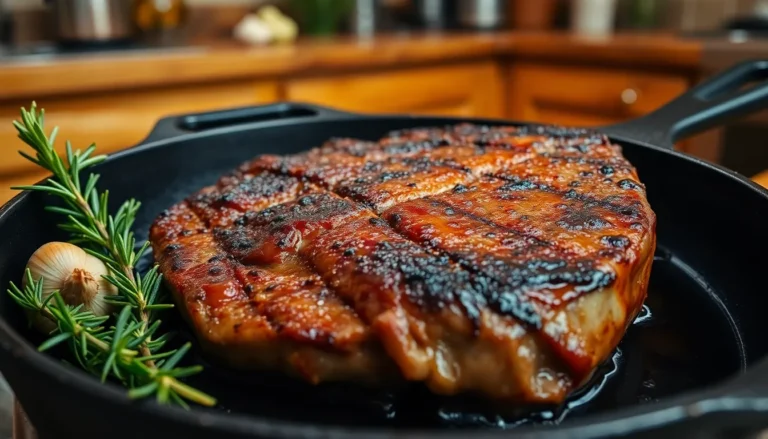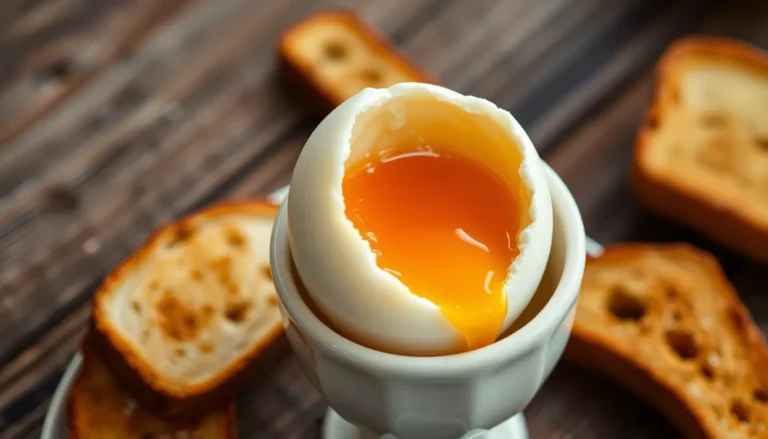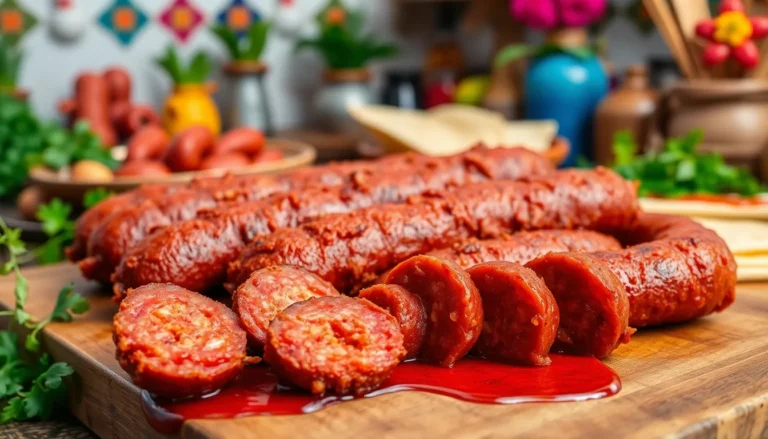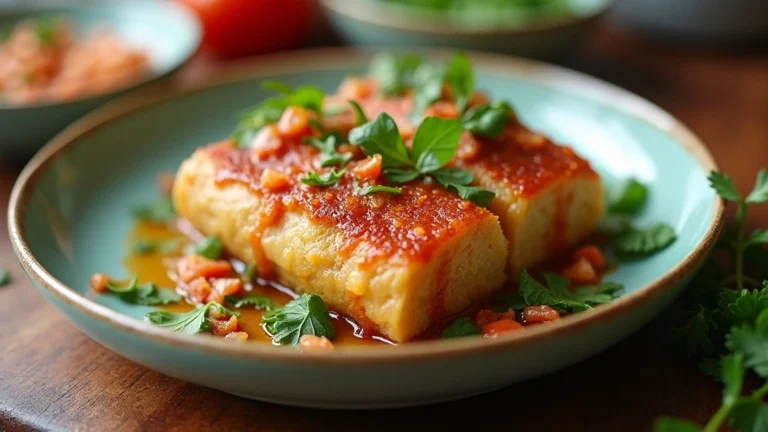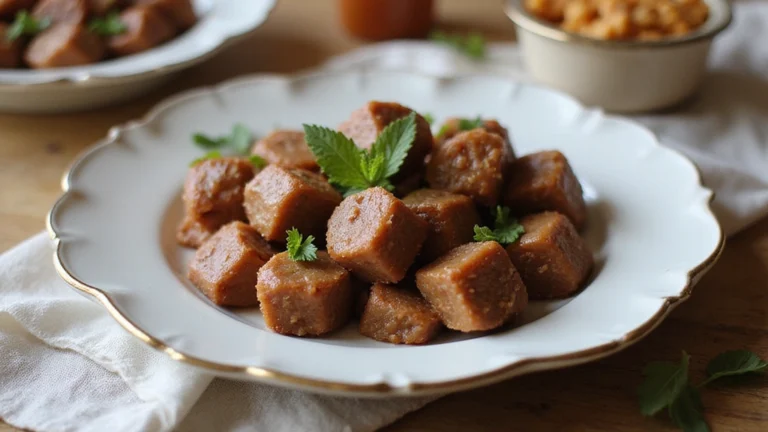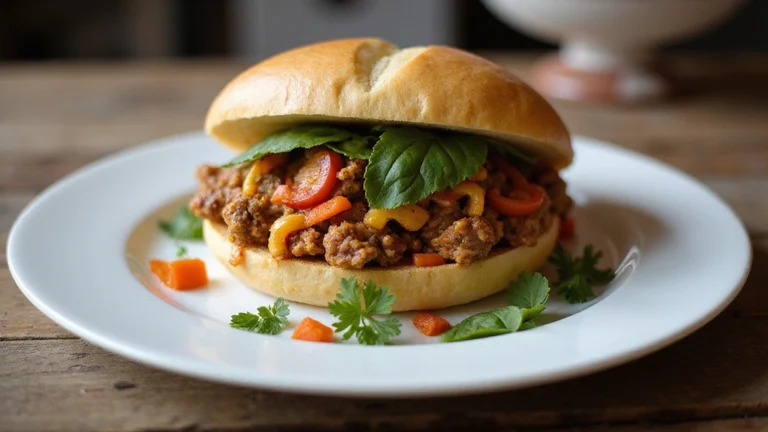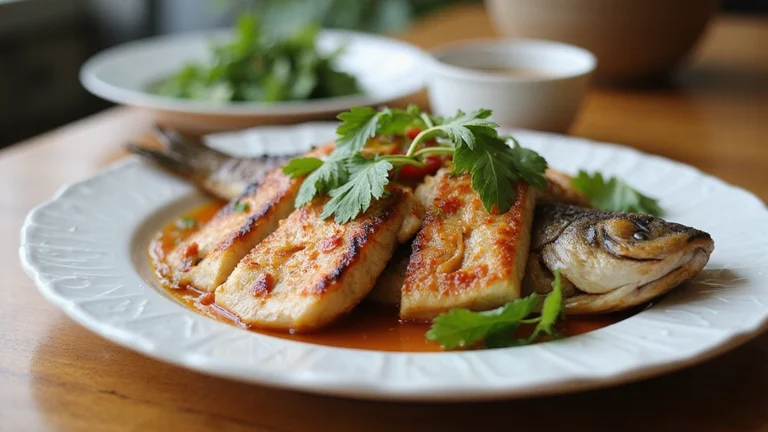
Wondering what properly cooked shrimp should look like? Getting it right can be the difference between a delicious seafood dish and a disappointing (or even unsafe) meal.
When cooked perfectly, shrimp undergoes a remarkable transformation from its raw state. The flesh turns from translucent to opaque white with hints of pink, while the exterior develops that distinctive rosy hue that curves into a C-shape. Understanding these visual cues isn’t just about culinary perfection—it’s essential for food safety and achieving that ideal tender, juicy texture that makes shrimp so beloved.
Understanding Perfectly Cooked Shrimp
Perfectly cooked shrimp displays distinct visual and textural characteristics that indicate both optimal flavor and food safety. The transformation from raw to cooked shrimp involves several noticeable changes that serve as reliable indicators of doneness.
Raw shrimp starts with a translucent, grayish appearance and a soft, somewhat slimy texture. As heat penetrates the flesh, proteins denature and restructure, causing the shrimp to become firm and opaque. This process typically takes just 2-3 minutes depending on the size of the shrimp and cooking method.
When examining cooked shrimp, look for these key indicators:
- Color transformation: The flesh changes from translucent gray to opaque white with pink or light red accents
- Distinctive curl: Properly cooked shrimp forms a “C” shape rather than a tight “O” shape (which indicates overcooking)
- Firm yet tender texture: The shrimp should offer slight resistance when bitten but remain juicy and tender
- Clean separation: The meat easily detaches from the shell if not previously removed
“I’ve found that the ‘C’ versus ‘O’ shape test is the most reliable visual cue for my restaurant customers,” notes Liam Kohn. “When shrimp curls into a complete circle, it’s already passed its prime texture point.”
Temperature also plays a crucial role in determining doneness. Shrimp reaches food safety standards at an internal temperature of 145°F (63°C), but many chefs prefer removing them from heat at 135-140°F (57-60°C) as they continue cooking for a short time after removal from heat.
Color Changes in Properly Cooked Shrimp
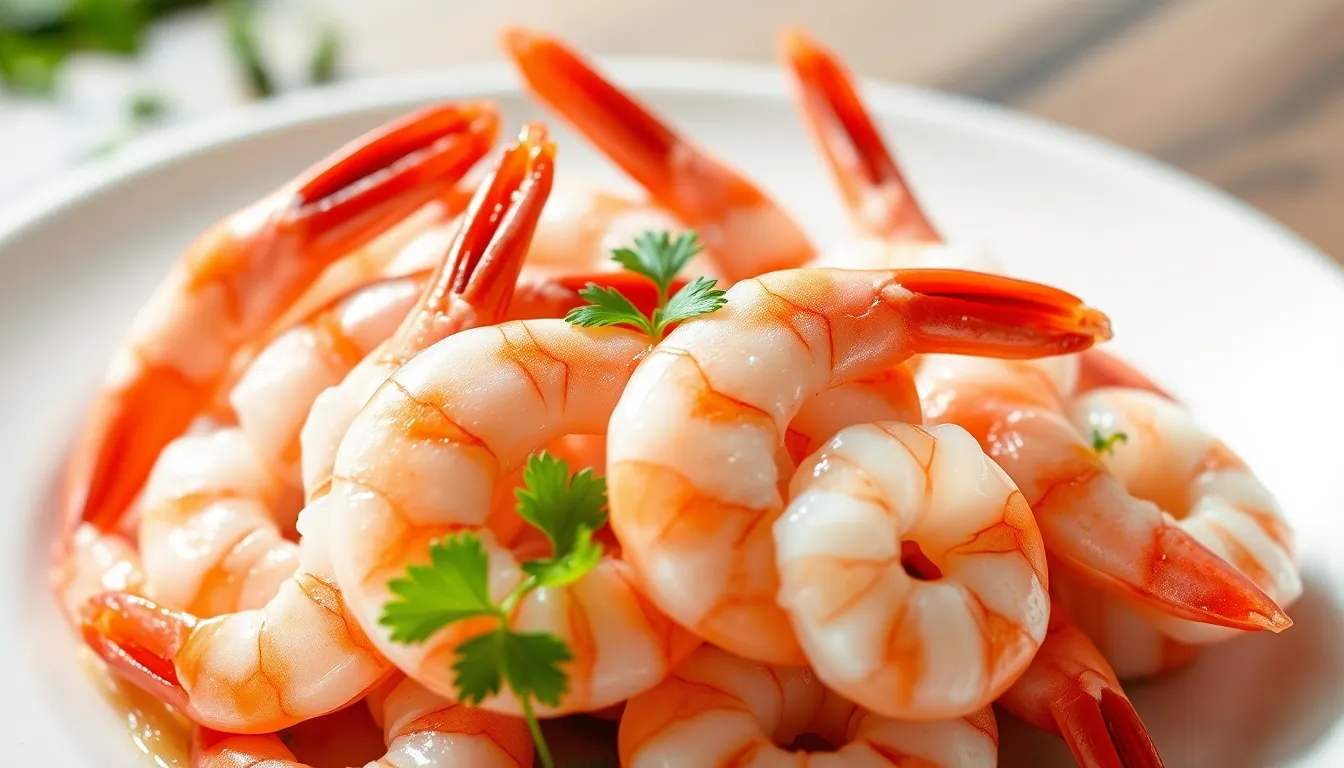
Cooked shrimp exhibit dramatic color transformations that serve as reliable indicators of doneness. These visual cues help you determine when shrimp have reached their optimal cooking point, ensuring both delicious flavor and food safety.
The Pink to Red Transformation
Raw shrimp display a blue-gray or translucent appearance due to a natural pigment called astaxanthin. This pigment remains bound to proteins (specifically crustacyanin) in raw shrimp, masking the vibrant pink color that’s characteristic of cooked shrimp. Heat from cooking denatures these proteins, releasing the astaxanthin and triggering a vivid color change. Your shrimp will transform from their initial gray-blue shade to a bright pink or red hue as they cook properly. This color transformation happens relatively quickly and provides an immediate visual cue that your shrimp are approaching doneness.
White Opaque Flesh Indicators
The flesh of raw shrimp appears translucent, almost see-through in certain light. As heat penetrates the shrimp during cooking, the proteins in the flesh coagulate and turn distinctly opaque white. This transformation from translucent to opaque represents one of the most reliable indicators that your shrimp are properly cooked. Perfectly cooked shrimp show completely white, opaque flesh with no translucent areas remaining. Any remaining gray or translucent sections indicate that the shrimp need additional cooking time. The combination of opaque white flesh and pink-red exterior creates the classic appearance of properly cooked shrimp that signals they’re ready to be enjoyed.
Texture Signs of Perfectly Cooked Shrimp
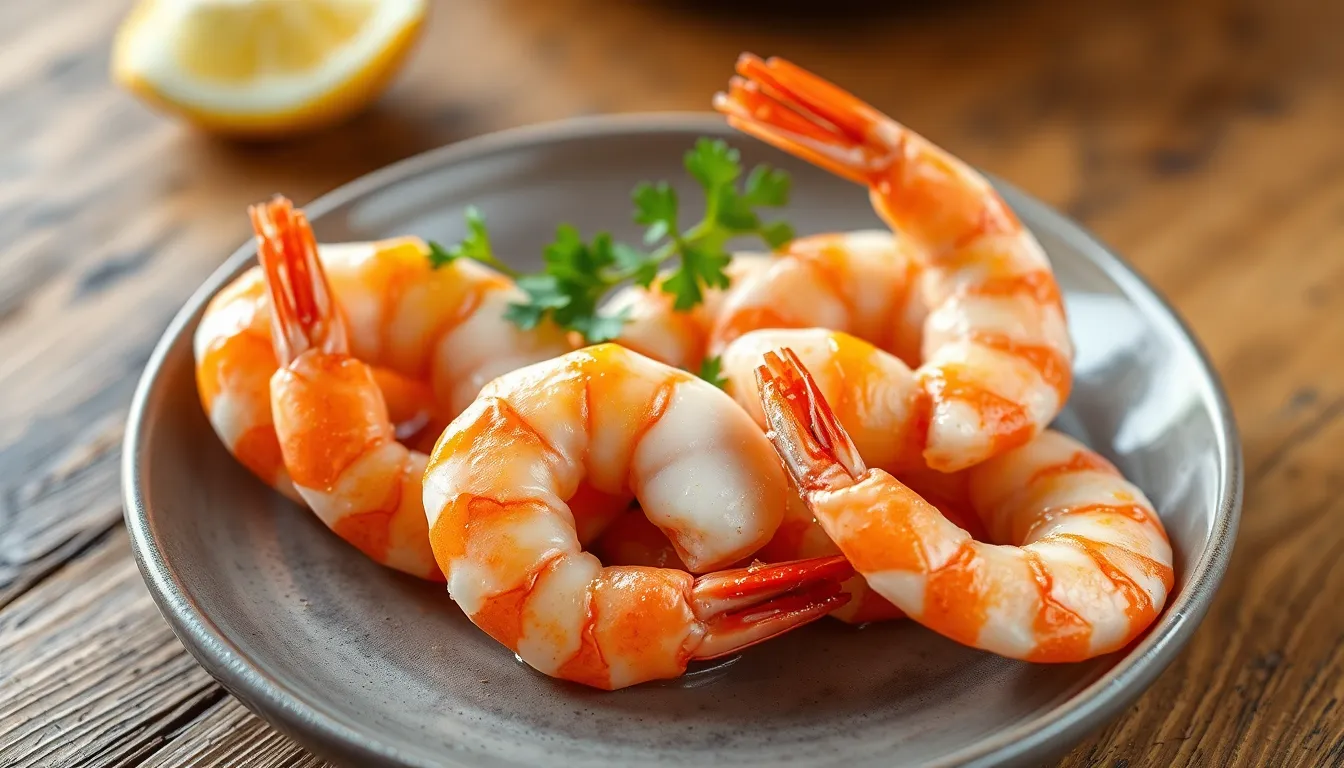
The texture of shrimp provides immediate feedback about its doneness. When cooked properly, shrimp exhibits exact physical characteristics that indicate it’s reached the perfect balance between raw and overcooked.
The C-Shape vs. O-Shape Test
Shrimp naturally curl as they cook, forming distinctive shapes that reveal their doneness status. Perfectly cooked shrimp form a loose “C” shape, indicating they’ve reached the ideal cooking point. This gentle curve happens as proteins contract during the heating process. Overcooked shrimp, in contrast, curl tightly into an “O” shape, signaling they’ve been exposed to heat for too long. This excessive curling isn’t just visual—it directly correlates with texture problems, resulting in tough, rubbery shrimp that lack the delicate tenderness that makes them so enjoyable. Examining the curl shape gives you an immediate visual cue about texture before you even take a bite.
Firmness Without Rubbery Texture
Perfectly cooked shrimp feel firm yet maintain a slight springiness when touched. This ideal texture strikes a delicate balance—the flesh offers resistance when pressed with tongs or a spatula but still yields slightly. Raw shrimp feel soft and somewhat slimy, while overcooked shrimp become noticeably tough and rubbery. The springy quality indicates that the proteins have set enough to provide structure without becoming overly tight and tough. Cooking times vary by size, with most shrimp reaching this perfect texture after 2-3 minutes per side in a hot pan. The shrimp shouldn’t feel mushy or excessively elastic—instead, they should offer a pleasant resistance that gives way to a tender bite.
Visual Indicators of Undercooked Shrimp
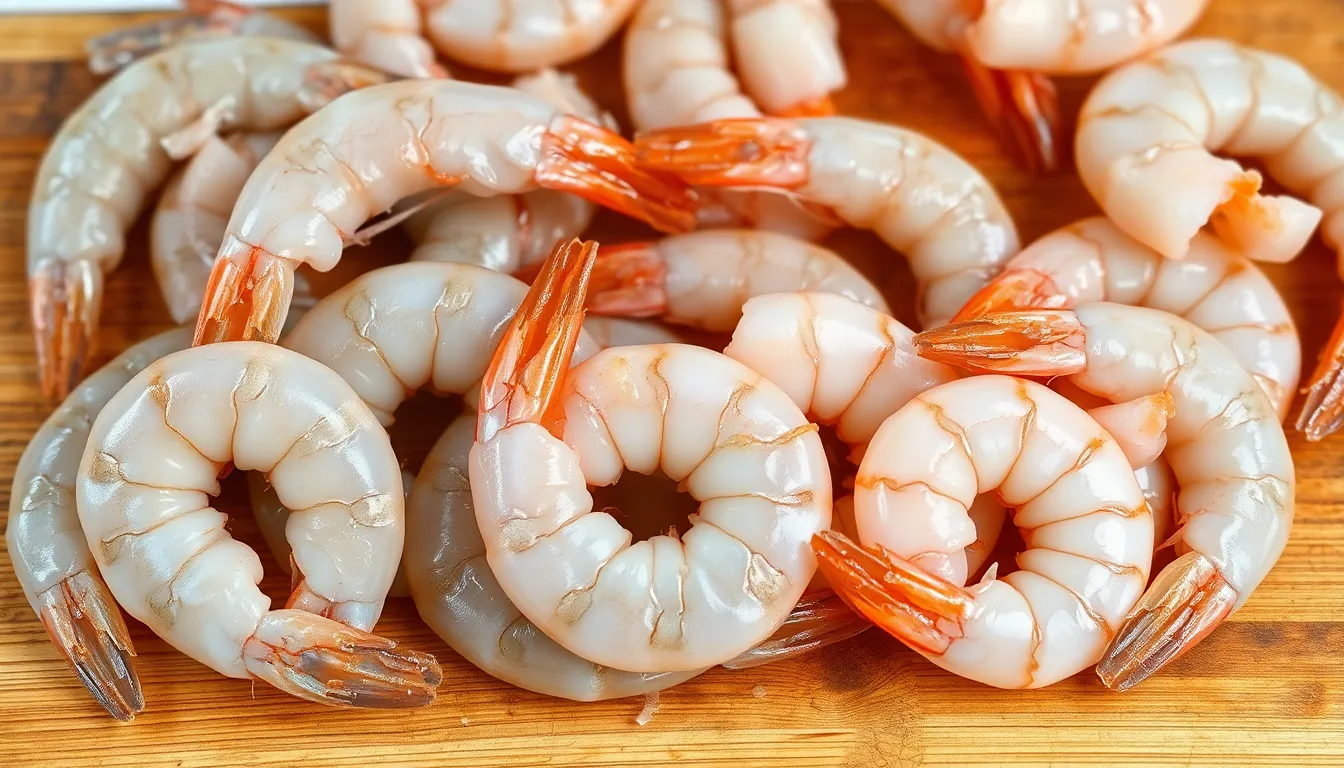
Identifying undercooked shrimp relies primarily on visual cues that clearly indicate when seafood isn’t ready for consumption. Recognizing these signs helps prevent foodborne illness and ensures you’re enjoying shrimp at its best.
Gray or Translucent Appearance
Undercooked shrimp display a distinctly grayish color with noticeably translucent flesh. Their shells and meat allow light to pass through, giving the flesh an almost clear appearance rather than the solid white of fully cooked shrimp. Raw shrimp typically maintain a straight or slightly curled shape, unlike their cooked counterparts. Previously frozen shrimp might show a gentle bend even when undercooked, making color and opacity more reliable indicators than shape alone. The translucent quality extends throughout the flesh, creating a glassy look that signals the cooking process remains incomplete.
Safety Concerns with Undercooked Shrimp
Consuming undercooked shrimp poses important food safety risks, including bacterial contamination and parasitic exposure. The Centers for Disease Control and Prevention and FDA specifically recommend cooking shrimp to an internal temperature of 145°F (63°C) to eliminate these health hazards. Properly cooked shrimp should exhibit pearly, opaque flesh throughout—any remaining translucent areas indicate unsafe preparation. Shrimp left in a gray or translucent state harbor potentially harmful microorganisms that proper cooking would otherwise destroy. Food safety experts emphasize storing cooked shrimp in the refrigerator promptly, as leaving them at room temperature for more than two hours encourages bacterial proliferation. The visual transformation from translucent gray to opaque white with pinkish-orange coloring serves as nature’s built-in safety indicator, letting you know when your shrimp have reached a food-safe temperature.
Signs of Overcooked Shrimp to Avoid
Overcooked shrimp has distinct characteristics that detract from its taste and texture. Recognizing these signs helps you achieve perfectly cooked shrimp every time and avoid disappointing results.
Shrinkage and Toughness
Shrimp shrinks significantly when overcooked, becoming noticeably smaller than properly cooked specimens. This shrinkage occurs as excess moisture evaporates from the flesh, causing the proteins to contract tightly. The texture transforms from tender and succulent to tough and chewy, making each bite less enjoyable. You’ll notice immediate resistance when biting into overcooked shrimp, requiring more effort to chew through the dense, contracted protein structure.
Dry and Stringy Texture
Overcooked shrimp develops an unpleasantly dry, stringy texture that ruins the eating experience. The moisture that gives properly cooked shrimp its juicy quality evaporates, leaving behind rubbery, fibrous flesh that feels like you’re chewing on a pencil eraser. This textural deterioration happens quickly—just 30 seconds too long in a hot pan can transform perfect shrimp into an unappetizing, stringy disappointment. The flesh often separates into visible strands rather than maintaining its natural, cohesive structure.
Cooking Methods and Their Impact on Appearance
Different cooking techniques significantly influence how your shrimp will look when they’re done. Each method creates unique visual characteristics while maintaining the fundamental signs of perfectly cooked shrimp.
Boiling vs. Grilling vs. Sautéing
Boiling transforms shrimp into delicate, evenly pink morsels with a clean appearance. Boiled shrimp maintain their sweet essence and neutral flavor profile, making them perfect for shrimp cocktails or fresh salads. They curl into the characteristic C shape and develop a uniform pink color throughout.
Grilling adds distinctive char marks to your shrimp while preserving more internal moisture than boiling. The high direct heat causes the shrimp to turn pink and opaque quickly, often with attractive grill lines that enhance both presentation and flavor. Grilled shrimp still exhibit the telltale C shape of proper donning but feature a slightly different texture.
Sautéing produces vibrant pink shrimp with lightly browned edges, depending on your cooking oil and pan temperature. The quick cooking in a hot pan with seasonings creates a more complex exterior appearance while maintaining the crucial opaque flesh. Sautéed shrimp develop a firm texture and can take on beautiful caramelization from the Maillard reaction without becoming overcooked and forming the dreaded circular O shape that indicates toughness.
Regardless of your chosen method, properly cooked shrimp should never appear translucent. The transformation from gray, translucent raw shrimp to pink or white opaque cooked shrimp occurs across all cooking techniques, serving as your most reliable indicator of doneness.
Conclusion
Mastering the visual cues of properly cooked shrimp is essential for both delicious meals and food safety. Remember to look for that signature transformation from translucent gray to opaque white with pink accents and the telltale C-shape curl. Trust your eyes—perfectly cooked shrimp should never appear translucent.
The ideal texture offers slight resistance without being rubbery or tough. Whether you’re boiling grilling or sautéing monitor cooking times carefully as just 30 seconds can make the difference between succulent seafood and a disappointing dinner.
With these visual and textural indicators in your culinary toolkit you’ll confidently prepare shrimp that’s not only safe to eat at 145°F but also a pleasure to enjoy every time.
Frequently Asked Questions
How can I tell if shrimp is properly cooked?
Properly cooked shrimp undergoes a visible transformation from translucent gray to opaque white with pink or red highlights. The shrimp should curl into a loose “C” shape, not a tight “O” which indicates overcooking. The texture should be firm yet slightly springy when pressed. For food safety, ensure shrimp reaches an internal temperature of 145°F (63°C), though many chefs prefer 135-140°F (57-60°C) for optimal texture.
Why do shrimp turn pink when cooked?
Shrimp turn pink when cooked because heat releases astaxanthin, a natural pigment that’s bound to proteins in raw shrimp. As proteins denature during cooking, this reddish pigment becomes visible on the surface. This dramatic color change from translucent blue-gray to bright pink is a natural indicator that the proteins have denatured and the shrimp is becoming safe to eat.
How long should I cook shrimp?
Most shrimp cook in just 2-3 minutes per side in a hot pan, depending on their size. Jumbo shrimp may need slightly longer, while smaller varieties cook faster. Watch for the visual transformation from translucent to opaque and the formation of a loose “C” shape. Overcooking happens quickly—just 30 seconds too long can result in tough, rubbery shrimp.
What happens if I overcook shrimp?
Overcooked shrimp becomes noticeably tough and rubbery with a tight “O” shape curl. They shrink significantly as moisture evaporates and proteins contract, resulting in dry, stringy texture that’s unpleasant to eat. The once-juicy flesh becomes chewy and loses its delicate flavor. Unfortunately, there’s no way to rescue overcooked shrimp, so careful timing is essential.
Is it dangerous to eat undercooked shrimp?
Yes, undercooked shrimp poses significant health risks. Raw or undercooked shrimp may contain harmful bacteria like Vibrio or parasites that can cause foodborne illness. Symptoms include nausea, vomiting, and diarrhea. Always cook shrimp until completely opaque with no translucent parts visible and until they reach an internal temperature of 145°F (63°C) to ensure safety.
How do different cooking methods affect shrimp?
Different cooking methods produce varied results while maintaining the same doneness indicators. Boiling yields delicate, evenly pink shrimp. Grilling adds char marks and smoky flavor while preserving moisture. Sautéing creates vibrant pink shrimp with lightly browned edges for enhanced flavor. Regardless of method, properly cooked shrimp should always be opaque white with pink highlights.
Can I tell if frozen shrimp is properly cooked?
Yes, the same visual cues apply to frozen shrimp. Previously frozen shrimp should transform from translucent to opaque white with pink highlights when properly cooked. The C-shape curl and firm yet springy texture remain reliable indicators of doneness. If using pre-cooked frozen shrimp, you’ll just need to heat them until warm, watching carefully to avoid overcooking.
How should I store cooked shrimp?
Store cooked shrimp in an airtight container in the refrigerator for up to 3-4 days. For longer storage, freeze them in a freezer-safe container for up to 3 months. Always cool shrimp completely before refrigerating and don’t leave them at room temperature for more than 2 hours (1 hour if it’s above 90°F/32°C) to prevent bacterial growth.
